Collection
Discover our collection of objects.
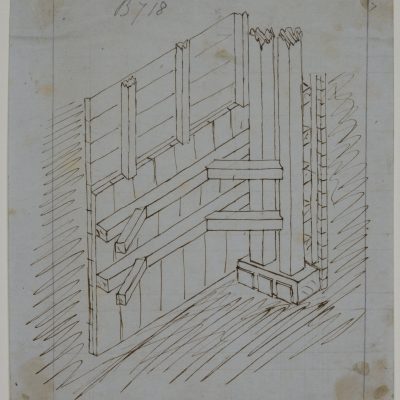
Sketch of the timbering for the removal of the old shield
If you’d like a print of the artwork displayed above, you can purchase one from the ArtUK online shop.
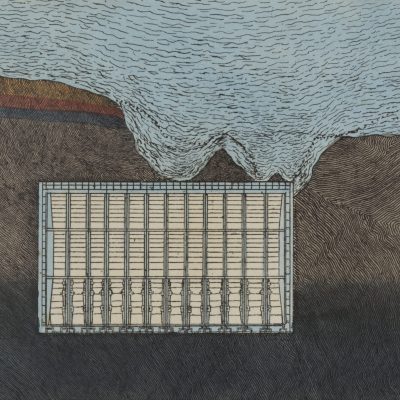
View of the shield
This watercolour wash view shows a cross section of the tunnel with the intrusion that caused the first flood on the 18th of May 1827. Unlike some of the other pieces in this collection showing the first flood (see LDBRU:2017.16 and LDBRU:2017.17), this piece is small in scale, at only 128mm x 90mm, and therefore …
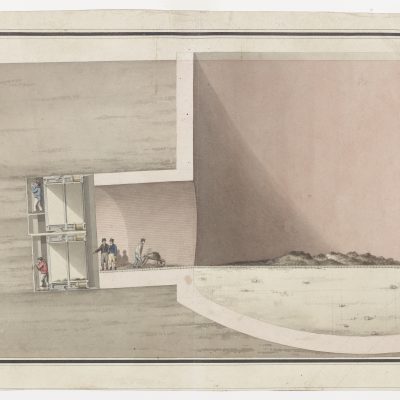
Watercolour of planned Shaft and section of a Tunnel
If you’d like a print of the artwork displayed above, you can purchase one from the ArtUK online shop.
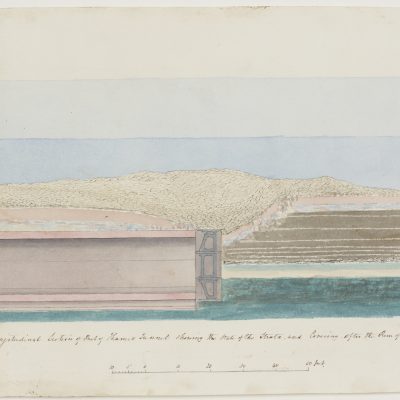
Side view of the Thames Tunnel after flooding
If you’d like a print of the artwork displayed above, you can purchase one from the ArtUK online shop.
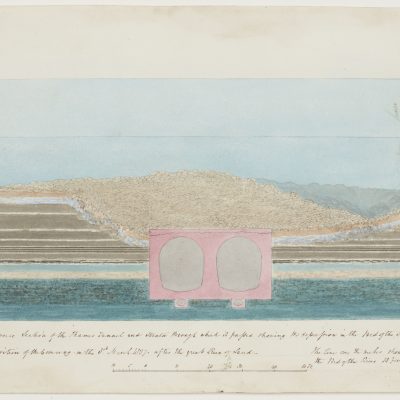
Cross-section of the Thames Tunnel after flooding
If you’d like a print of the artwork displayed above, you can purchase one from the ArtUK online shop.
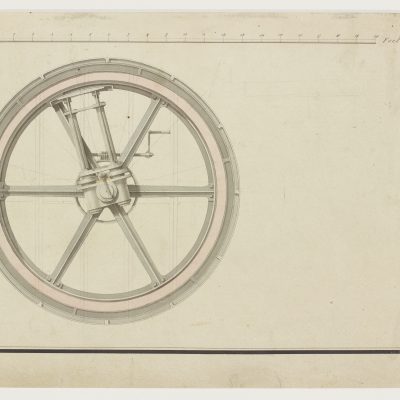
Watercolour of a cylindrical tunnelling shield
An early watercolour technical illustration depicting two cross sections of an early design for the tunnelling shield. This piece was likely drawn by Joseph Pinchback, Brunel’s chief mechanical draughtsman, and is cut from a sheet dated September 1818. See LDBRU:2017.5 and LDBRU:2017.20 for the complete page and other views of the design. Brunel’s patent no. …
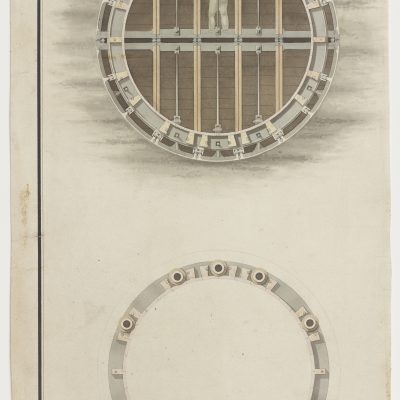
Two watercolour views of a cylindrical tunnelling shield
An early watercolour technical illustration depicting two cross sections of an early design for the tunnelling shield. This piece was likely drawn by Joseph Pinchback, Brunel’s chief mechanical draughtsman, and is cut from a sheet dated September 1818. See LDBRU:2017.5 and LDBRU:2017.20 for the complete page and other views of the design. In Brunel’s patent …
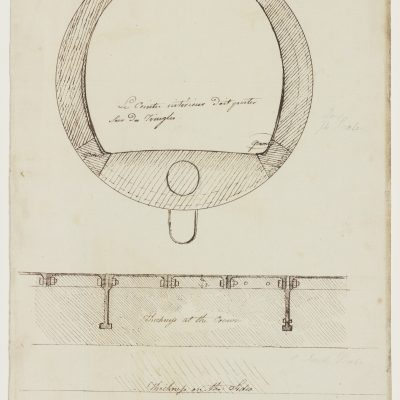
Sketch for a proposed cast-iron tunnel
If you’d like a print of the artwork displayed above, you can purchase one from the ArtUK online shop.

Watercolour of the timbering for the removal of the old Shield
If you’d like a print of the artwork displayed above, you can purchase one from the ArtUK online shop.
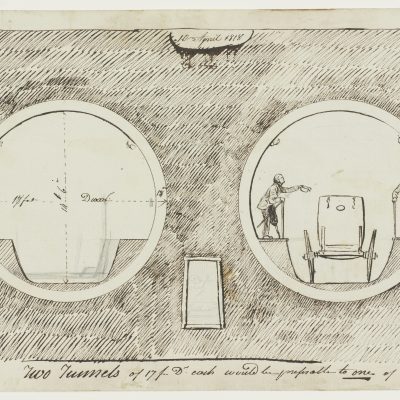
Sketch of a proposed cylindrical tunnel
This is a sketch-plan of a proposed tunnel, drawn by Marc Brunel and dated 10 April 1818. Only a few months prior in January 1818, Brunel had submitted his patent for ‘forming tunnels or drifts underground in which he included designs very similar to those drawn here and in LDBRU:2017.10. On the left side, there …
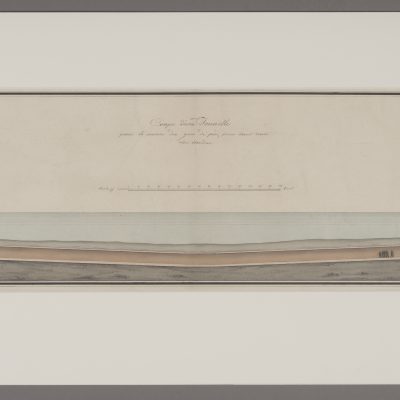
‘Cross-section of a Tunnel for the use of infantry, shown in its full extent’
This watercolour illustration, signed and dated by Joseph Pinchback, 1818 (‘Drawn by J. Pinchback, 1818’) shows a cross-section view of an early tunnel design. It is captioned, in Marc Brunel’s hand, ‘Coupe d’une Tonnelle pour le service des gens de pied, prise dans toute son étendue’, or ‘Cross-section of a Tunnel for the use of …
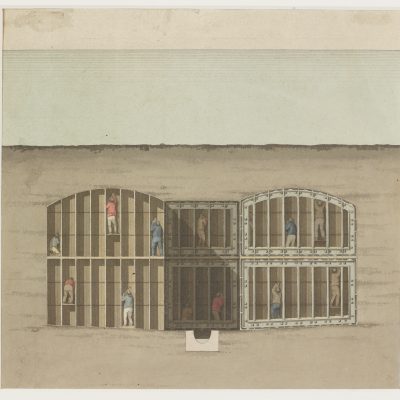
Watercolour of proposed three-part Shield
If you’d like a print of the artwork displayed above, you can purchase one from the ArtUK online shop.
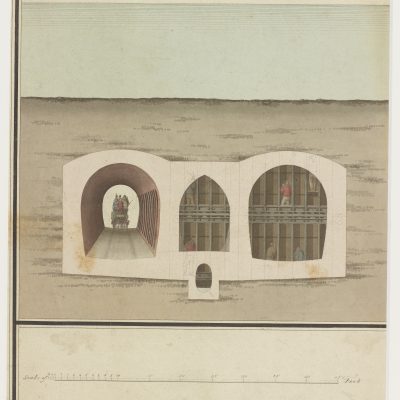
Watercolour of proposed three-part tunnel
If you’d like a print of the artwork displayed above, you can purchase one from the ArtUK online shop.
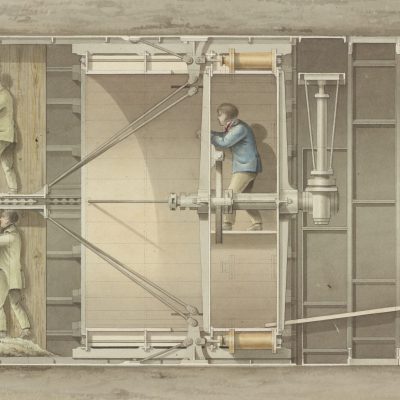
Watercolour of proposed tunnelling Shield
An early watercolour technical illustration of the tunnelling process. This piece was likely drawn by Joseph Pinchback, Brunel’s chief mechanical draughtsman, and is cut from a sheet dated September 1818. See LDBRU:2017.5 and LDBRU:2017.20 for the complete page and other views of the design. Two miners are featured excavating earth inside individual compartments. Close inspection …
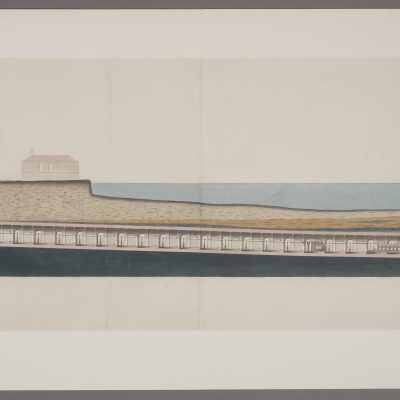
Watercolour cross-section of the Tunnel
This is a cross-sectional view of the Thames Tunnel mid-construction, believed to have been drawn by Brunel’s chief mechanical draftsman, Joseph Pinchback, during or shortly after 1831. By this point in the Tunnel’s history, progress had come to a complete standstill. A second flood and subsequent failure to secure additional funding had ended in the …
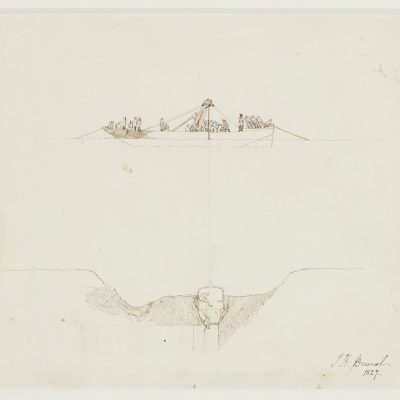
Sketch of a descent in the diving bell
This sketch, drawn with pen and ink on wove paper, is signed and dated 1827 by Isambard Kingdom Brunel. It depicts his descent in a diving bell to inspect the damage following the first flood that occurred on the 18 May 1827. It shows the bell lowered and suspended by a boat crewed by twenty …
